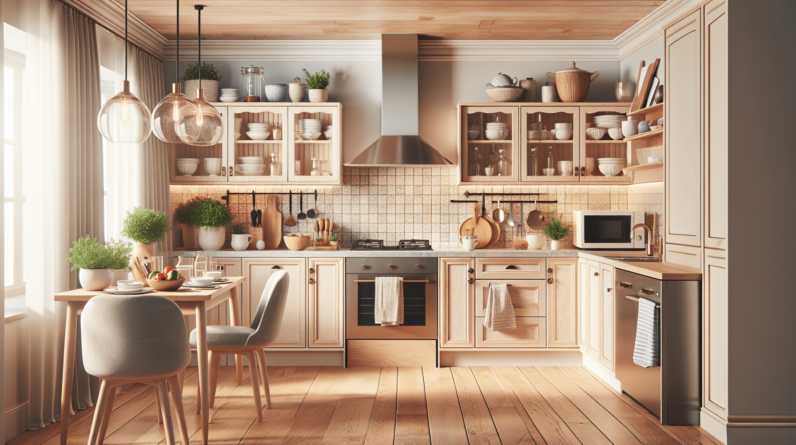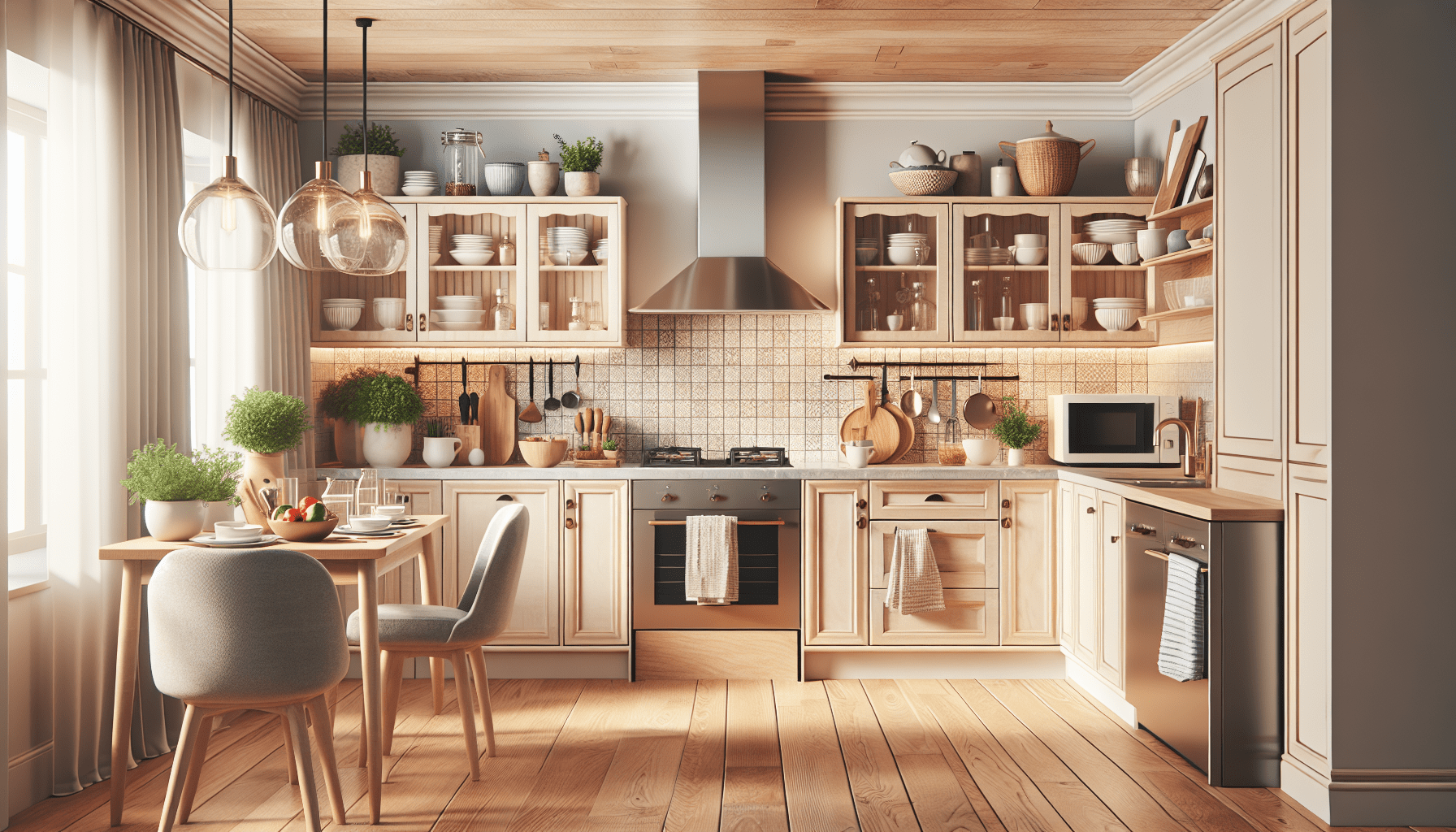

Have you ever wondered how much it might cost to remodel your small kitchen? A kitchen makeover can be an exciting project, but figuring out the budget can feel overwhelming. You want to balance your dreams for an updated space with your financial reality.
Understanding Small Kitchen Remodeling Costs
Budgeting for a small kitchen remodel involves considering various factors, from design choices to labor costs. It’s essential to have a clear understanding of what influences these costs so you can make informed decisions that suit your vision and budget.
Factors That Influence Small Kitchen Remodeling Costs
Several elements can affect the overall expense of your kitchen remodeling project. Knowing these can help you allocate your budget more effectively.
1. Size of the Kitchen
Even though you’re dealing with a small kitchen, its specific dimensions matter. A smaller layout might seem like it could save you money, but if you’re just changing the layout significantly or upgrading expensive elements, costs can add up quickly.
2. Design Choices and Style
What style are you imagining for your kitchen? Whether you envision a modern, farmhouse, or traditional look will have a sizeable impact on your price point. High-end materials and fixtures will obviously increase your costs.
3. Materials Used
The materials you choose—cabinets, countertops, flooring, and appliances—will greatly influence your overall expenses. There’s a vast range of options, from laminate to marble or quartz, and the choices you make here can either stretch or save your budget.
4. Labor Costs
Labor costs can vary based on your location and the complexity of the tasks. Hiring professionals for plumbing or electrical work will add to your costs, especially in areas where labor is more expensive.
5. Permits and Regulations
Depending on your locality, you may need permits for extensive renovations. It’s pivotal to factor in any application fees or inspection costs into your budget.
Budgeting for Your Kitchen Remodel
Creating a solid budget is key to managing costs effectively. You want to ensure you cover all aspects of your small kitchen remodel without breaking the bank. Here’s how to outline a realistic budget.
Step 1: Set Your Overall Budget
Determine how much you’re willing to spend on the renovation. This figure will guide all your decisions moving forward. Remember to include a buffer—generally 10-20% of your overall budget—in case unexpected expenses arise.
Step 2: Breakdown the Costs
To give yourself a clearer picture, break down the costs into specific categories. A typical budget breakdown for a small kitchen remodel might look like this:
| Category | Percentage of Total Budget |
|---|---|
| Cabinets | 30% |
| Countertops | 15% |
| Flooring | 10% |
| Appliances | 15% |
| Labor | 25% |
| Miscellaneous | 5% |
This breakdown helps you prioritize your spending and make adjustments based on your preferences and needs.
Step 3: Research Costs
Do some research on the average costs of materials and labor in your area. Websites like HomeAdvisor or Angie’s List can provide you with cost estimates that can refine your budget even further.

Typical Costs of a Small Kitchen Remodel
After setting your budget, it’s beneficial to understand what typical costs look like. Knowing these can give you a realistic idea of what to expect.
Average Cost Range
A small kitchen remodel can range from about $5,000 to $20,000, depending on the extent of the work you plan to do. This can include anything from simple cosmetic changes to full renovations involving layout changes.
Breakdown of Costs by Category
-
Cabinets: You might spend between $2,000 and $8,000, depending on whether you choose stock, semi-custom, or custom cabinets.
-
Countertops: Material choices (like laminate vs. granite) can have you spending anywhere from $1,000 to $4,000.
-
Flooring: Installation could cost you between $1,000 and $3,000, depending on the type of flooring you choose.
-
Appliances: Expect to pay around $1,500 to $5,000 for new appliances, depending on their size and quality.
-
Labor: Depending on your location, labor can cost between 20-35% of your total project cost.
Hidden Costs to Consider
Be aware of hidden costs that might not be reflected in initial estimates. These might include:
- Electrical and Plumbing Updates: If your remodel requires moving electrical outlets or plumbing, these costs can add up.
- Structural Changes: If you’re knocking down walls or altering the layout, this can become pricey, very quickly.
Ways to Save on Your Small Kitchen Remodel
Staying within budget doesn’t mean you have to compromise on style or functionality. You can get creative with saving strategies.
1. Consider Refacing Instead of Replacing
If your cabinets are in decent shape, consider refacing them instead of a full replacement. Refacing can deliver a fresh look at a fraction of the cost!

2. DIY Where Possible
There are many aspects of kitchen remodeling that you can tackle yourself. For example, painting cabinets or installing a backsplash can be manageable DIY projects, saving you labor costs.
3. Shop Sales and Clearance
Check out local home improvement stores for sales or clearance items. You might find high-quality materials and appliances at reduced prices.
4. Opt for Stock Cabinets
While custom cabinets have their appeal, stock cabinets can still provide a fresh, beautiful look at a more budget-conscious price.
5. Limit Structural Changes
Keeping the same layout can save you a significant amount by avoiding extensive plumbing and electrical work.
Financing Your Kitchen Remodel
If your costs exceed your budget, or if you’re dealing with unexpected expenses, financing options can help turn your kitchen dreams into reality.
Home Equity Loans
If you have built equity in your home, consider taking out a home equity loan. This can provide you with a lump sum of cash that may carry a lower interest rate compared to personal loans.
Personal Loans
A personal loan is another option. However, be prepared to cope with potentially higher interest rates. Carefully read the terms and ensure you can afford the monthly payments.
Credit Cards
Using a credit card could be an option for smaller expenses, but be cautious of interest rates. Aim to pay it off as quickly as possible to prevent accruing high interest.
Budget-Friendly Alternatives
If traditional financing feels daunting, consider starting smaller. You could remodel one section of the kitchen at a time, spreading your costs out over a more extended period to remain financially comfortable.
The Impact of Market Trends on Costs
Understanding current market trends can assist in smarter investment decisions and budgeting during your small kitchen remodel.
Design Trends
Reflecting modern aesthetics can enhance both functionality and resale value. Popular trends currently include open shelving, energy-efficient appliances, and smart-home integrations. Embracing these trends can pay dividends in the long run.
Material Costs
Material costs can fluctuate based on demand and market forces. By keeping an eye on these trends, you can time your purchases for when prices may be lower.
Local Labor Trends
Labor rates can change based on economic conditions; being aware of local labor market trends can help you choose the best time to hire professionals.
Preparing for Your Small Kitchen Remodel
Preparing appropriately before diving into your project is essential for a smooth remodeling experience.
Step 1: Plan Your Design
Take time to sketch out your dream kitchen design. Drafting ideas on paper (or using design software) can help clarify your goals and keep you focused as you move through the project.
Step 2: Gather Inspiration
Look at magazines, blogs, or online platforms like Pinterest for inspiration. Make a vision board to gather and organize your favorite design elements.
Step 3: Hire Qualified Professionals
If you’re hiring contractors or other professionals, conduct thorough research. Get quotes and review credentials. Look for testimonials or reviews from previous customers to gauge their reliability and quality of work.
Step 4: Clear the Space
Before any work begins, clear your kitchen of everything. This includes appliances, cookware, and dining items. A clear and empty space can streamline the whole remodeling process.
Final Thoughts
Embarking on a small kitchen remodel is an exciting journey, and understanding the costs involved can help set you on the right path. Keep in mind that with a well-planned budget, a focus on cost-effective choices, and thorough preparation, you can create a beautiful and functional kitchen that suits your style and needs.
Stay flexible and remember to enjoy the process, as this is a significant investment in your home that can bring joy for years to come!






